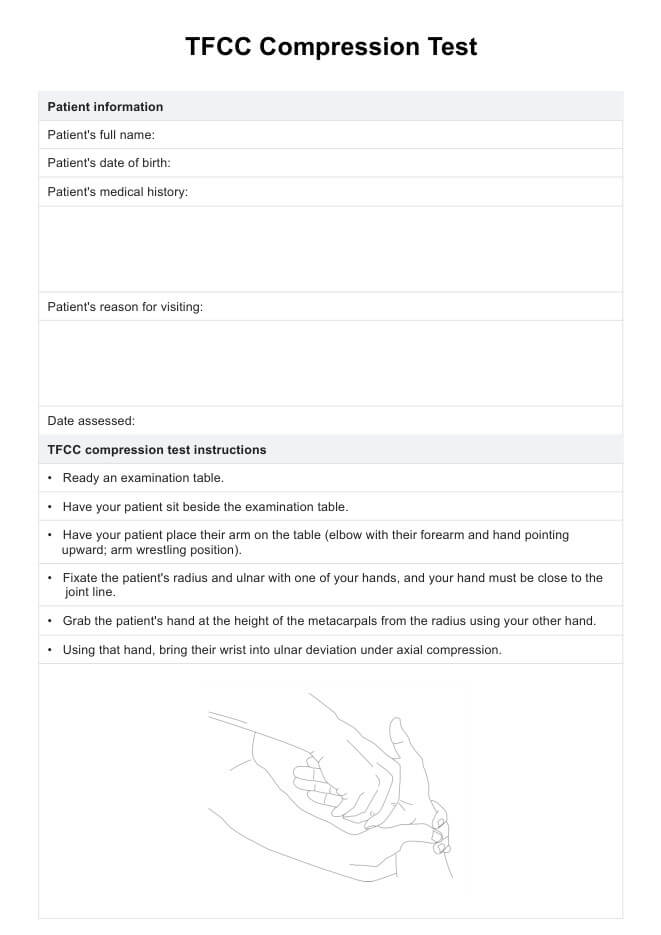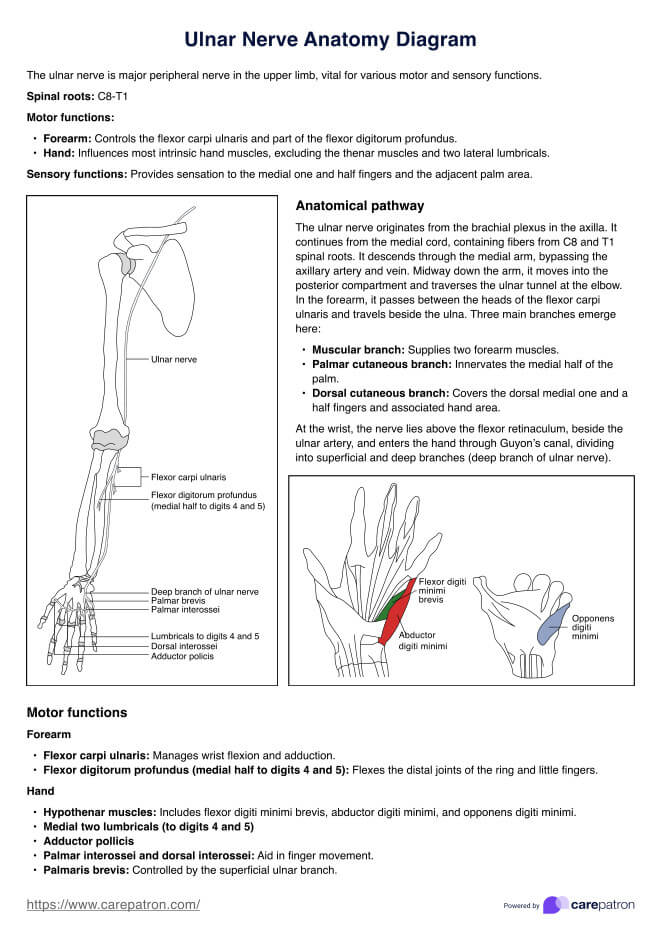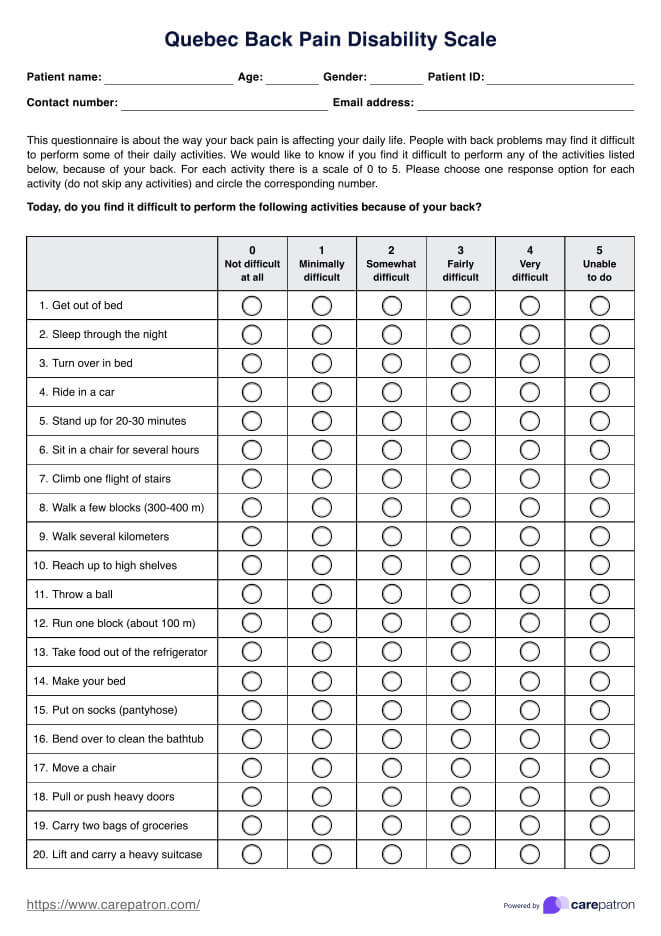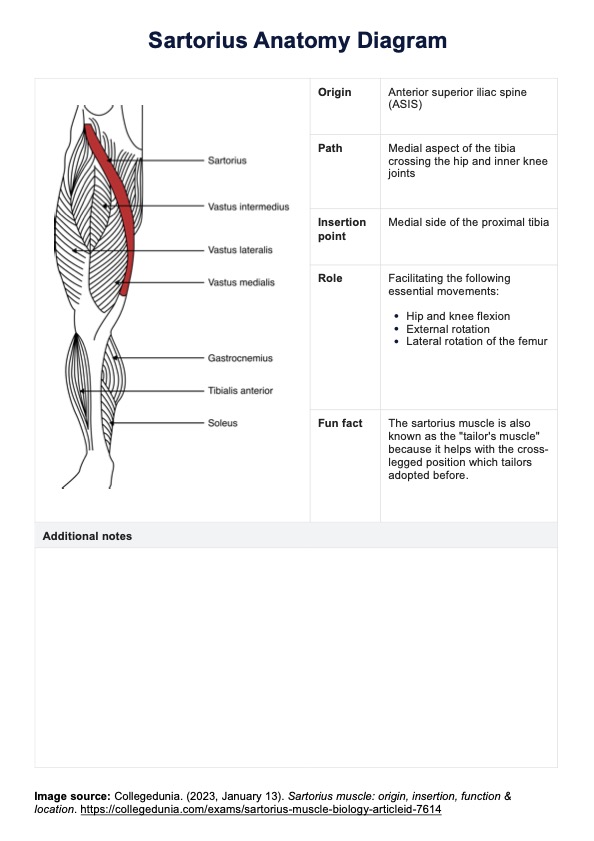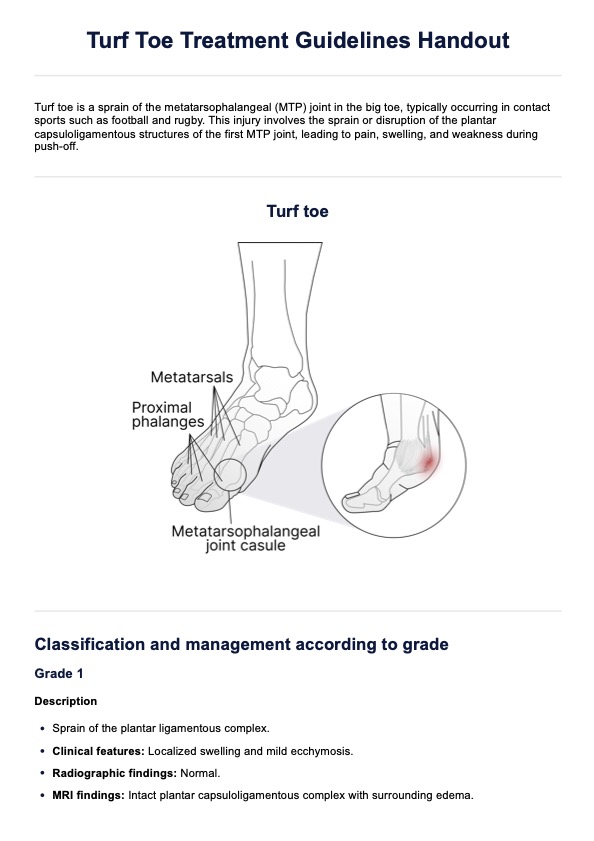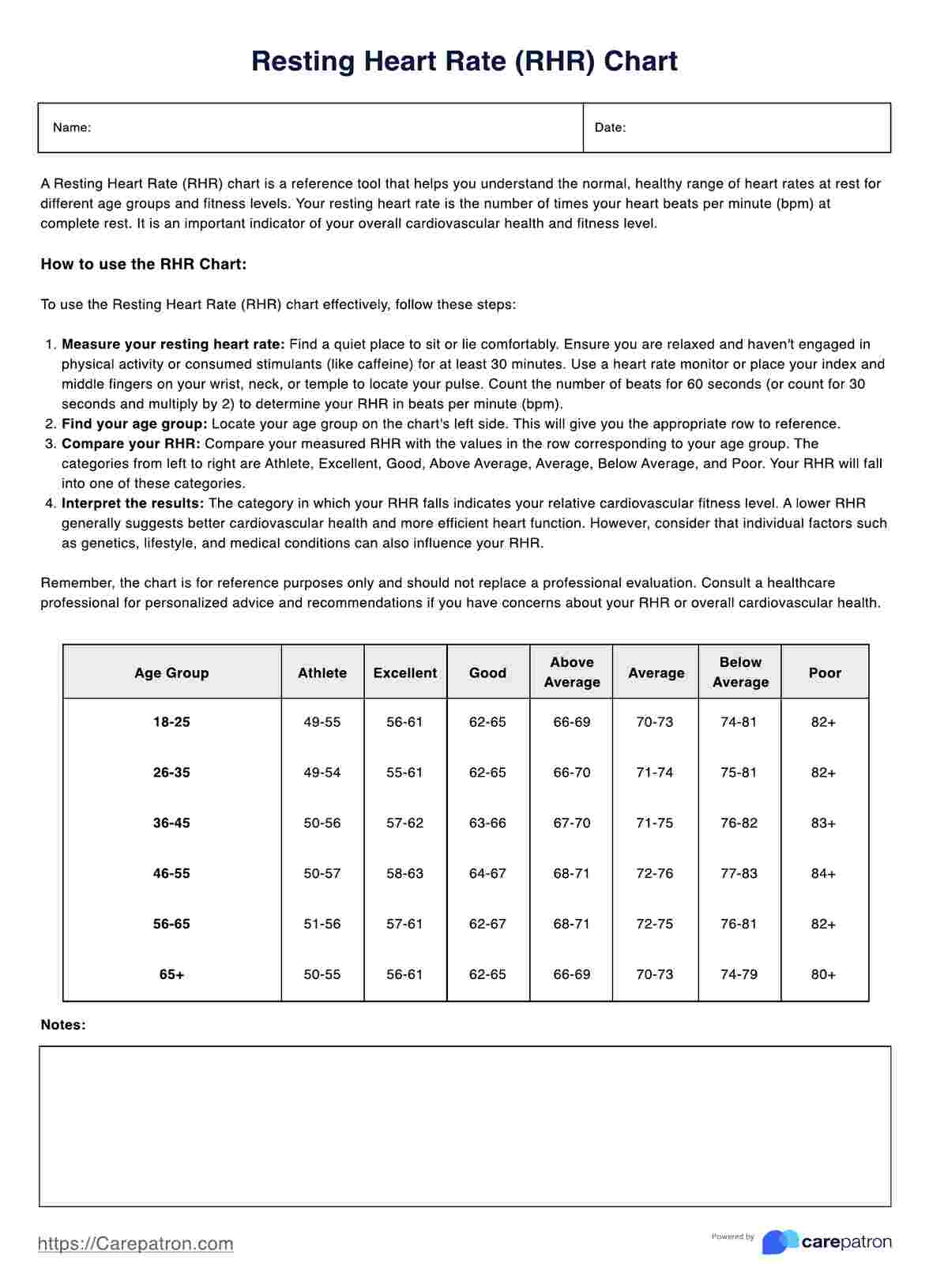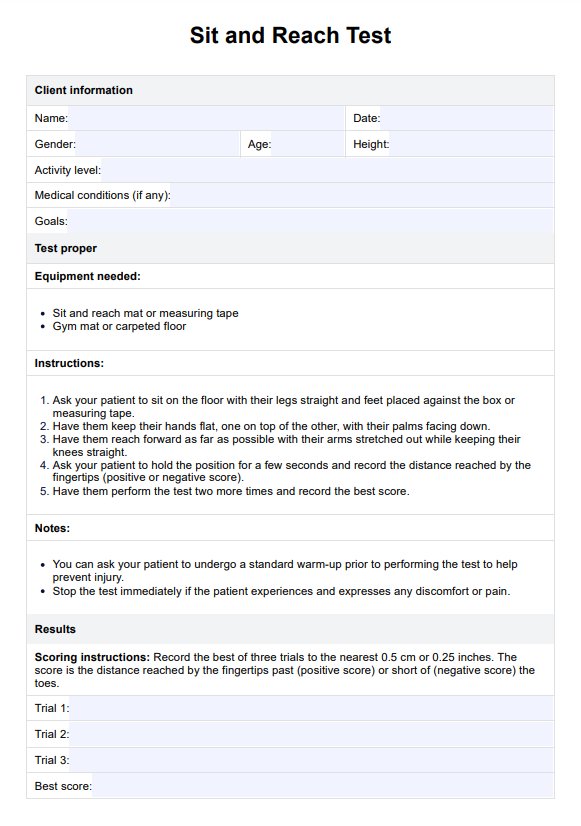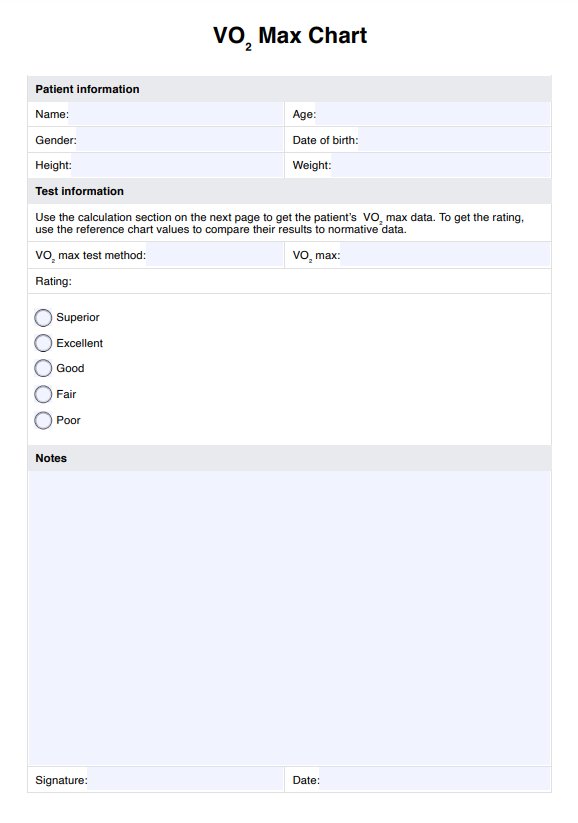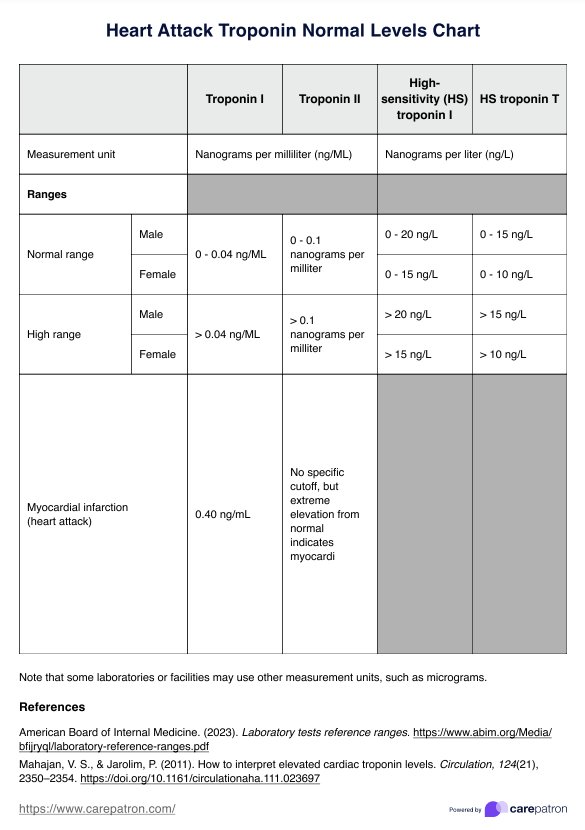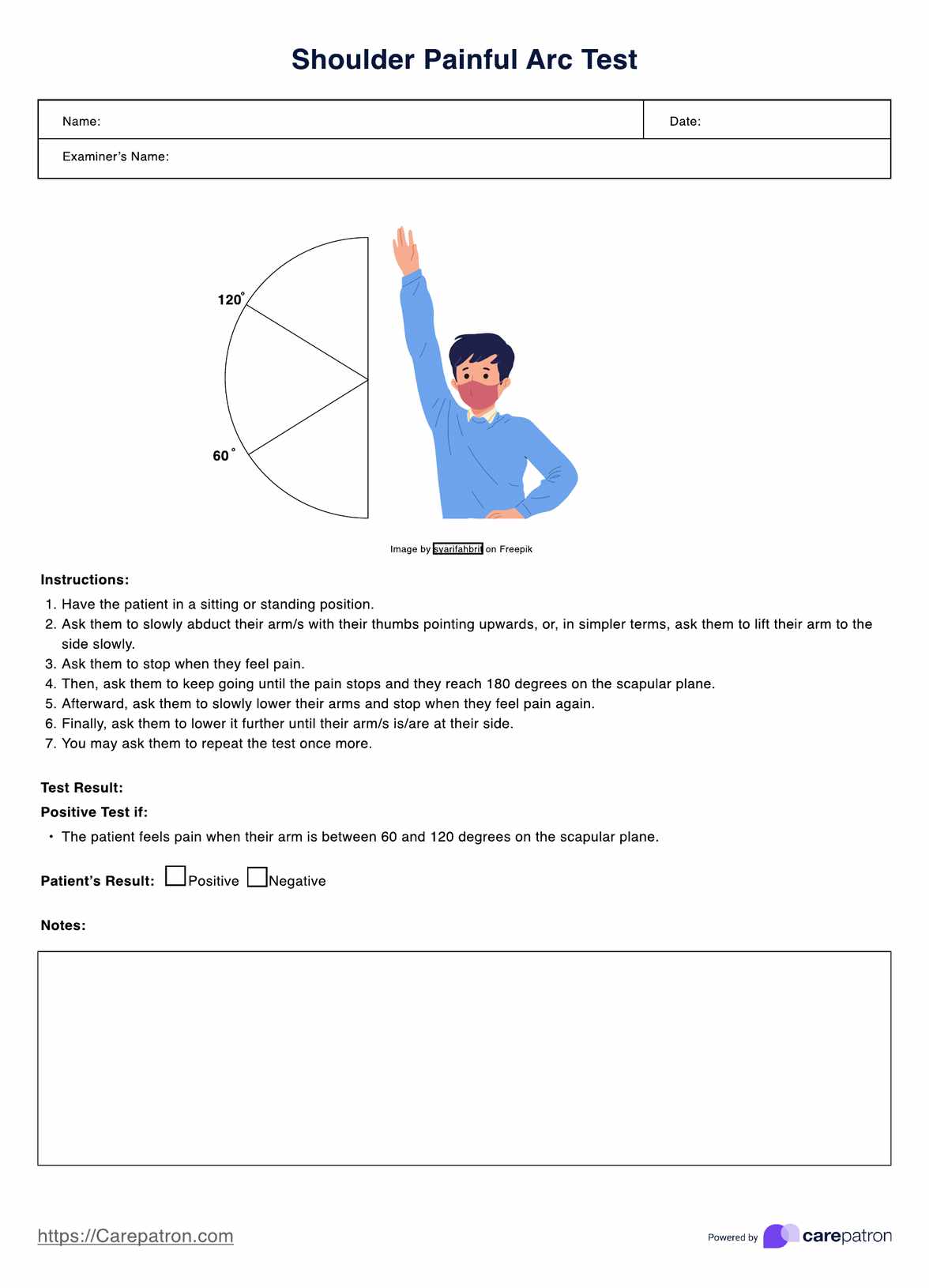Borg Scale
Monitor the intensity of your patient’s physical activity with the Borg Scale Test. Click here to download a free template and guide.


What is the Borg Rating of Perceived Exertion (RPE) Scale?
The Borg Rating of Perceived Exertion Scale, or the Borg RPE Scale for short, is a tool used by practitioners and patients to check and rate a physical activity's intensity (this may include resistance exercise intensity or any exercise that requires a lot of physical effort). The original version of the test has a list of numbers ranging from 6 to 20, wherein the higher the number, the more exertion the patient feels.
Exertion here is based on the patient's increased breathing, heart rate, sweating, and muscle fatigue. Usually, practitioners can ask their patients to conduct the test themselves and calculate the estimated heart rate by multiplying the number they rate by 10.
If you're a practitioner and think that this scale is useful for your practice, we encourage you to take advantage and utilize the template we have prepared to help you out. On it, you can find space where you or your patient can input the following information:
- Basic details such as the examination date, patient's name, and examiner's name if the patient won't be writing down the results on their own
- Patient's results
- Estimate of the actual heart rate
- Additional notes
Think you want a copy of our template? Then, head to the next section for a step-by-step on how to download and use the template!
Borg Scale Template
Borg Scale Example
How does this Borg RPE Scale work?
Step 1: Access the template
To access and download our template, do either of the following:
- Click the “Use this template” or “Download Template” button above.
- Search for “Borg RPE Scale” in Carepatron's template library on our app or website.
Step 2: Conduct the test
Once you have your hands on a template, you can give it to your patient to fill out or fill it out yourself. If your patient will be the one who will answer the test, instruct them to write down the basic information such as the exam date and their name, tick the checkbox that matches the exertion they felt, and calculate the estimate of their actual heart rate.
Step 3: Interpret the results
As for interpretation, in some cases, the patient may come to their own conclusions until they decide if they need to go harder or easy on themselves. However, for anything else, interpretation must be left to the practitioner in charge.
Scoring
There are two parts to the scoring for the Borg RPE Scale.
For the first part (the scale itself), the patient or the practitioner simply has to tick the checkbox that matches the exertion felt to get a score.
For the second part (the estimate of the actual heart rate), to get a score, one simply has to multiply the number obtained in the first part by 10.
When to use this Borg RPE Scale assessment?
The Borg assessment is an effective tool for various applications in healthcare and sports training. Here are specific scenarios when practitioners of human kinetics can use this scale:
- Monitoring the effectiveness of heart medications: Healthcare providers can use the Borg RPE Scale to evaluate the effectiveness of heart medications. By asking patients to rate their perceived exertion during physical activities, practitioners can assess whether heart medications are improving the patient's ability to perform these activities with less perceived effort. This can be particularly useful for adjusting medication dosages or for deciding whether to explore alternative treatments.
- Assessing progress in rehabilitation: In rehabilitation settings, the Borg RPE Scale can be used to track the progress of patients and to identify the need for intervention adjustments. By regularly measuring a patient's perceived exertion during prescribed exercises or tasks, practitioners can gauge improvements in physical capacity and endurance. This helps in customizing rehabilitation programs to match the growing abilities or specific needs of the patient, especially if they're dealing with problems like leg pain.
- Monitoring athletes during conditioning: For athletes engaged in body conditioning aimed at improving endurance or stamina, the Borg RPE Scale is a valuable tool for monitoring exercise intensity and physical stress. It helps in ensuring that athletes are training at the appropriate intensity to achieve their conditioning goals without overexerting themselves, which could lead to injury or burnout. Coaches and trainers can use the scale to adjust workout intensity and to ensure that the training aligns with the athlete's current physical condition and fitness objectives.
In all these scenarios, the Borg RPE Scale provides a subjective yet reliable measure of exertion, allowing for more tailored and effective management of physical activity, whether it's for medical, rehabilitative, or athletic purposes.
Benefits of using the Borg RPE Scale
Quick, inexpensive, and accessible
The Borg RPE Scale is a quick, inexpensive, and accessible test a practitioner can give to patients to check their heart rate while they're doing their physical activities and they're not wearing a smartwatch or can't find a heart monitor nearby.
Establish baselines for comparison
Practitioners can use this test to establish baselines to check the effectiveness of blood pressure or heart medication since the patient can check both the level of exertion and heart rate using the test. Furthermore, practitioners can ask the patient to utilize the test and template to help them develop a clinical impression or diagnosis when the patient expresses concerns related to their heart.
Tracks progress or changes
A benefit that goes hand in hand with the benefit above is that you can use our template multiple times to track progress or changes to see if the treatment is effective.
Empowering
In some instances, especially if the patient utilizes the test for their endurance or overall health, knowing your body's capabilities and limits can be empowering. The patient can decide how hard they can go to hit their fitness goals without hurting themselves in the process.
Fully digital
Our template is fully digital, meaning you can edit and access it on any gadget anytime, anywhere. Even better, if you're a practitioner who decides to store this document on Carepatron, you can limit viewing access to relevant parties only.
What is the Modified Borg Scale?
The Borg RPE Scale has a modified version. Instead of perceived exertion, the Modified Borg Scale is commonly used to assess and monitor dyspnea (shortness of breath). This scale assigns a numerical rating from 0 to 10, with zero being no difficulty breathing and 10 indicating the most intense level of difficulty.
By using this scale regularly, healthcare professionals can track changes in a patient's dyspnea and provide treatment accordingly. If your patient also suffers from dyspnea, then you can use both the regular and modified Borg scales to assess them.
How is it used?
It's similar to the regular Borg RPE Scale, but this time, the ratings are for shortness of breath. All you need to do is observe the patient for shortness of breath and rate them accordingly. You can also have the patient rate their perceived shortness of breath instead.
We have designed a Modified Borg Scale PDF example to help you understand how this assessment works. You can use this as a reference during your practice.
How is the modified version scored?
The Modified Borg Scale measures breathlessness and can help you track changes in your patient’s breathing. It has a 12-point scale ranging from 0 (no breathlessness) to 10 (very severe breathlessness).
Remember that the scale measures breathlessness at a single moment and may not represent your patient’s overall level of breathlessness. It is important to use the scale regularly, as changes in breathlessness may occur over time. Additionally, it is affected by factors such as level of physical activity, posture, and environment.
When is the modified version best used?
This Modified Borg Scale can measure the level of breathlessness for patients with chronic respiratory diseases such as COPD. You can also use this to:
Monitor and track the progress of patients in response to physical activity
The Modified Borg Scale is a fantastic tool for measuring breathlessness before, during, and after physical activity or rehabilitation. It can help you assess the intensity of physical activity, measure progress over time, and provide valuable feedback to your patients.
Assess the effects of different treatments on breathlessness
The Modified Borg Scale can also measure breathlessness in response to different treatments. This can help you understand the efficacy of treatment protocols, such as a rehabilitation program or medication regimen.
Estimate the severity of breathlessness in terms of exertion intensity
You can use this scale to estimate the intensity of breathlessness based on physical exertion. It allows you to identify which activities may be too strenuous for your patients and which would be most beneficial for improving their overall health.
Determine when symptoms may require medical attention or intervention
By monitoring the intensity of breathlessness through the Modified Borg Scale, you can determine when symptoms may require medical attention or intervention. This could help to reduce the risk of complications and support early detection of changes in the patient’s condition.
Commonly asked questions
The Borg Scale, developed by Swedish researcher Gunnar Borg, is a tool for measuring physical exertion. It allows individuals to rate their perceived physical exertion during physical activities, ranging from no exertion to maximal exertion. This scale helps in understanding the intensity of exercise based on internal cues like muscle pain, breathing rate, and overall fatigue, rather than solely on physiological measures.
Borg's Rating of Perceived Exertion (RPE) Scale is widely used in exercise science and sports medicine to tailor exercise prescriptions to an individual's physical capacity. It's also useful in exercise testing to assess the intensity of actual lifting tasks or other physical demands. By using RPE, trainers and healthcare professionals can monitor and adjust workout intensity based on how hard a person feels they are working, taking into account their unique physical condition and any musculoskeletal injuries.
While Borg's perceived exertion scales primarily focus on measuring exercise intensity and physical exertion, other linear scales like the Likert Scale are more versatile and used for a variety of subjective measurements. Borg's scales are specifically designed to correlate the physical and psychological aspects of exertion, such as increased sweating, muscle activity, and overall bodily feelings during exercise, which is not typically the focus of Likert or other linear scales.
Borg's scales are instrumental in understanding how different clinical groups perceive exertion during physical activities. They help in assessing the muscle and cardiovascular load, the cumulative workload, and the physiological and pulmonary responses in a variety of populations, including those with disease, healthy adults, and athletes. This understanding is crucial for designing exercise programs and physical therapy that are safe and effective for diverse individuals.
Borg's Perceived Exertion Scale has a high correlation with physiological measures such as heart rate, muscle pain, and breathing rate. It serves as a subjective tool that can predict and align with these objective measures, making it a valuable asset in exercise science and physical medicine. This correlation allows for a more holistic approach to measuring exercise intensity, considering both how the body feels and its physiological responses.

























































































